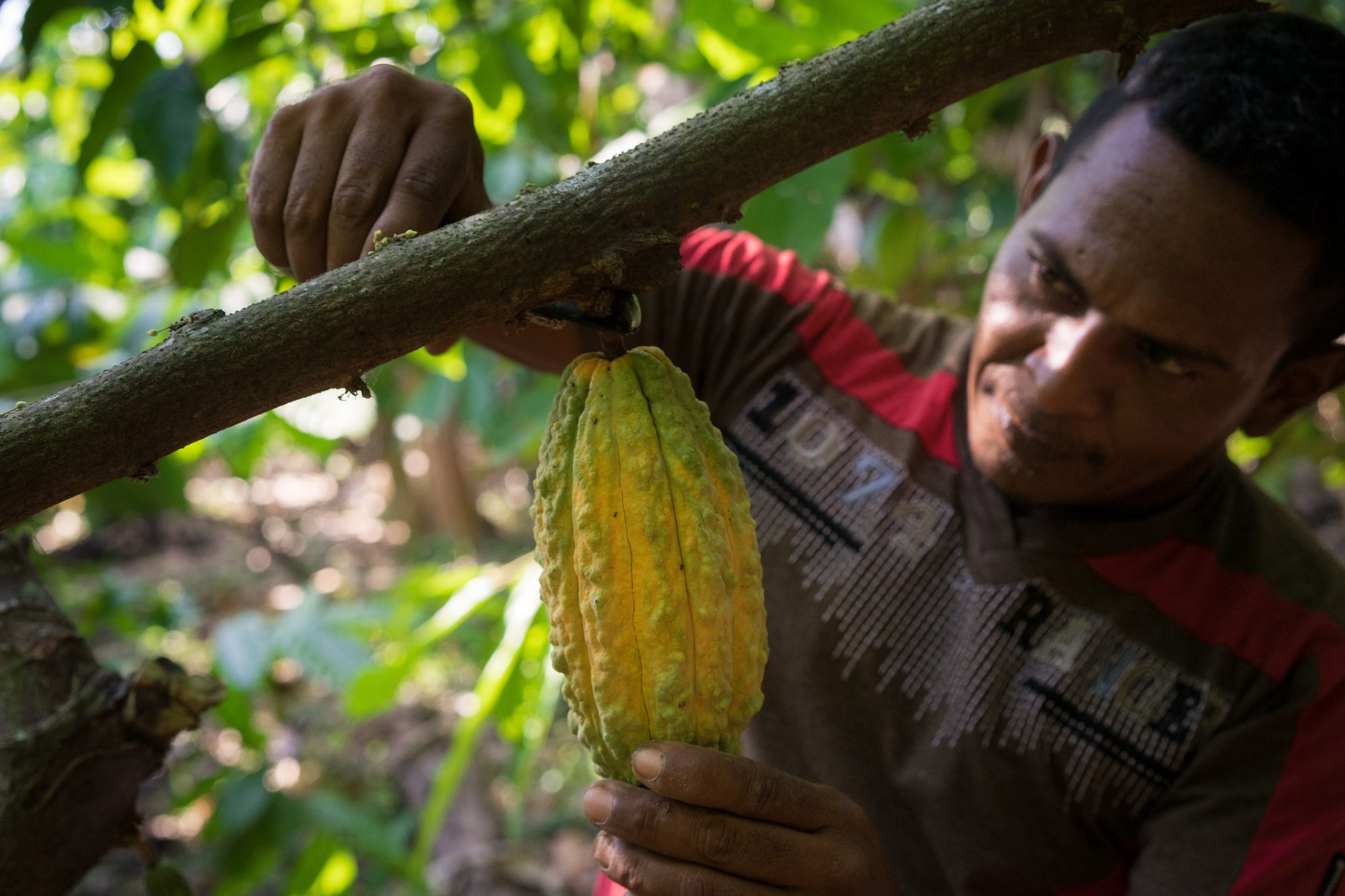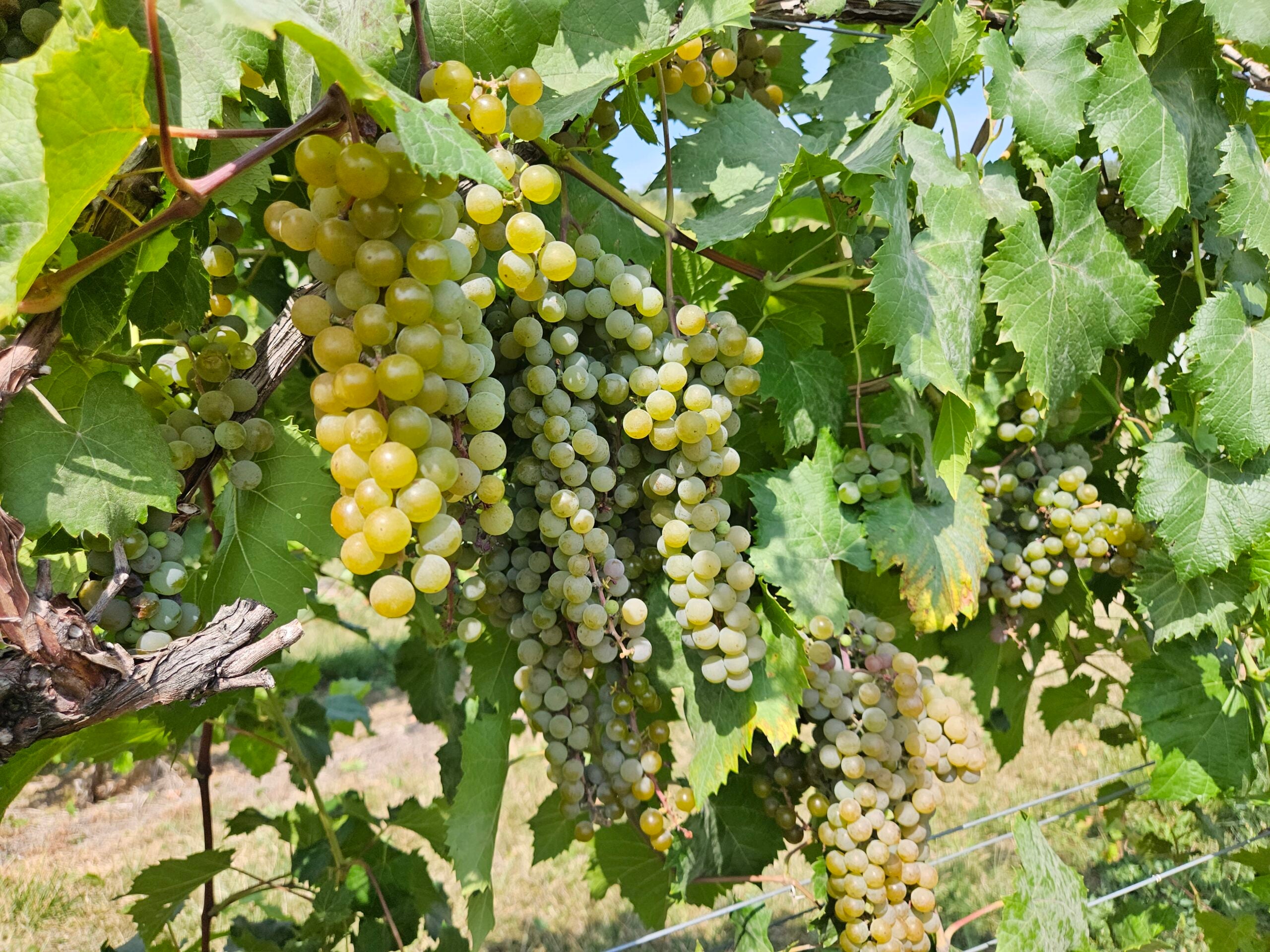Chocolate connoisseurs know that like wine, single source chocolate can take on the flavors of where it is grown. We talk about preserving heirloom cacao and the art of making fine chocolates.
Featured in this Show
-
Chocolate Organization Tries To Help Cacao Farmers Amidst Economic Pressures, Environmental Changes
With prevalent environmental changes and economic pressures, a chocolate organization is trying to help small farms around the world that grow cacao, the plant that produces chocolate, stay afloat.
The Fine Chocolate Industry Association helped form the Heirloom Cacao Preservation Fund, a nonprofit meant to improve the lives of farmers who are helping protect and preserve the highly sought after, heirloom varieties of cacao.
The association is testing different genetics and flavors of cacao trees to determine which varieties should be saved and propagated, said FCIA member and chocolatier Gail Ambrosius.
“The tastes are so unique and unusual,” she said of some of the different varieties that have been tested.
Ambrosius said a tree from Belize was recently found in a forest preserve. Its flavor turned out to be very good and now the preservation is hoping to create a small farm to help promote the variety.
“It’s easy to propagate the heirloom varieties once you identify them,” she said. “It’s a way to preserve them, so we’re producing fine flavored chocolate instead of a mass produced flavor. You don’t want to sacrifice flavor for high yield and high productivity.”
The preservation has criteria for farmers to meet, so they can become certified. Once that is accomplished, they receive more money for their chocolate and the recognition will also help them sell more of their product, said Ambrosius.
Most farms are between two and 12 acres in size and she said, the rough estimate is that 80 percent of cacao farmers are small family farms.
In order to make chocolate from the cacao trees, the tree’s pods are removed. The pods are filled with 25 to 40 beans, Ambrosius said. Those beans are removed from the pods and fermented, then dried in the sun, roasted and crushed, she said.
The crushing results in a thick paste called chocolate liquor (there is no alcohol in it). In combination with sugar it becomes chocolate.
Fermentation is key, it breaks down the sugars in the pulp and create the flavor inside of the bean, she said.
“If that step isn’t done properly you’re not going to have fine flavored chocolate,” Ambrosius said.
And fine flavored, specialty chocolate is in high demand. She said the market has grown by 21 percent in just the last year.
Episode Credits
- Larry Meiller Host
- Jill Nadeau Producer
- Gail Ambrosius Guest
Wisconsin Public Radio, © Copyright 2024, Board of Regents of the University of Wisconsin System and Wisconsin Educational Communications Board.


